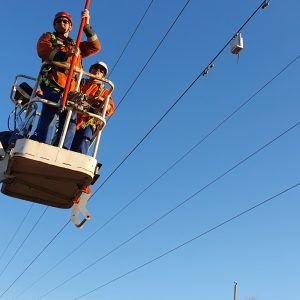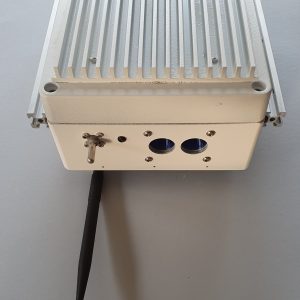 Over time, electricity transmission cables can sag towards the ground as towers move and parts wear. In some cases the distance between the ground and the cable can approach the regulatory minimum. For such cables the transmission provider, which in New Zealand is Transpower, would like to keep a watch on the height. Consequently we were commissioned to develop a height monitoring unit capable of continuously returning height data.
Over time, electricity transmission cables can sag towards the ground as towers move and parts wear. In some cases the distance between the ground and the cable can approach the regulatory minimum. For such cables the transmission provider, which in New Zealand is Transpower, would like to keep a watch on the height. Consequently we were commissioned to develop a height monitoring unit capable of continuously returning height data.
The prototype field units that we developed incorporate a lidar range sensor, temperatures sensors and a Lora, long distance radio to communicate the data to a logging and visualisation application, so that Transpower can observe changes in the cable height, which typically occur with changes in temperature due to weather conditions and current flowing through the cable. 
Before developing a lidar unit, we undertook some initial tests to ensure that a Lora radio would operate in an environment with very high electromagnetic fields.
Two units, using our custom microcontroller / Lora radio board, were then assembled and installed on different ‘at risk’ high voltage electricity cables. They were mounted onto the cables using insulated ‘hot sticks’, which lines crews use regularly to install various operational items onto cables whilst they are still live.
The two battery powered units have been running successfully for several months, so that Transpower is now keen to have us develop a mark II version. This will incorporate an ultrasonic wind velocity sensor and a cable temperature sensor, also implementing some other design improvements.
Eventually it is expected that Transpower will be looking to deploy quantities of units throughout the country to monitor cables at risk so as to be able to have much better information on which to plan remedial maintenance, prioritising work on those cables where risks  of regulatory violation are highest.
of regulatory violation are highest.
